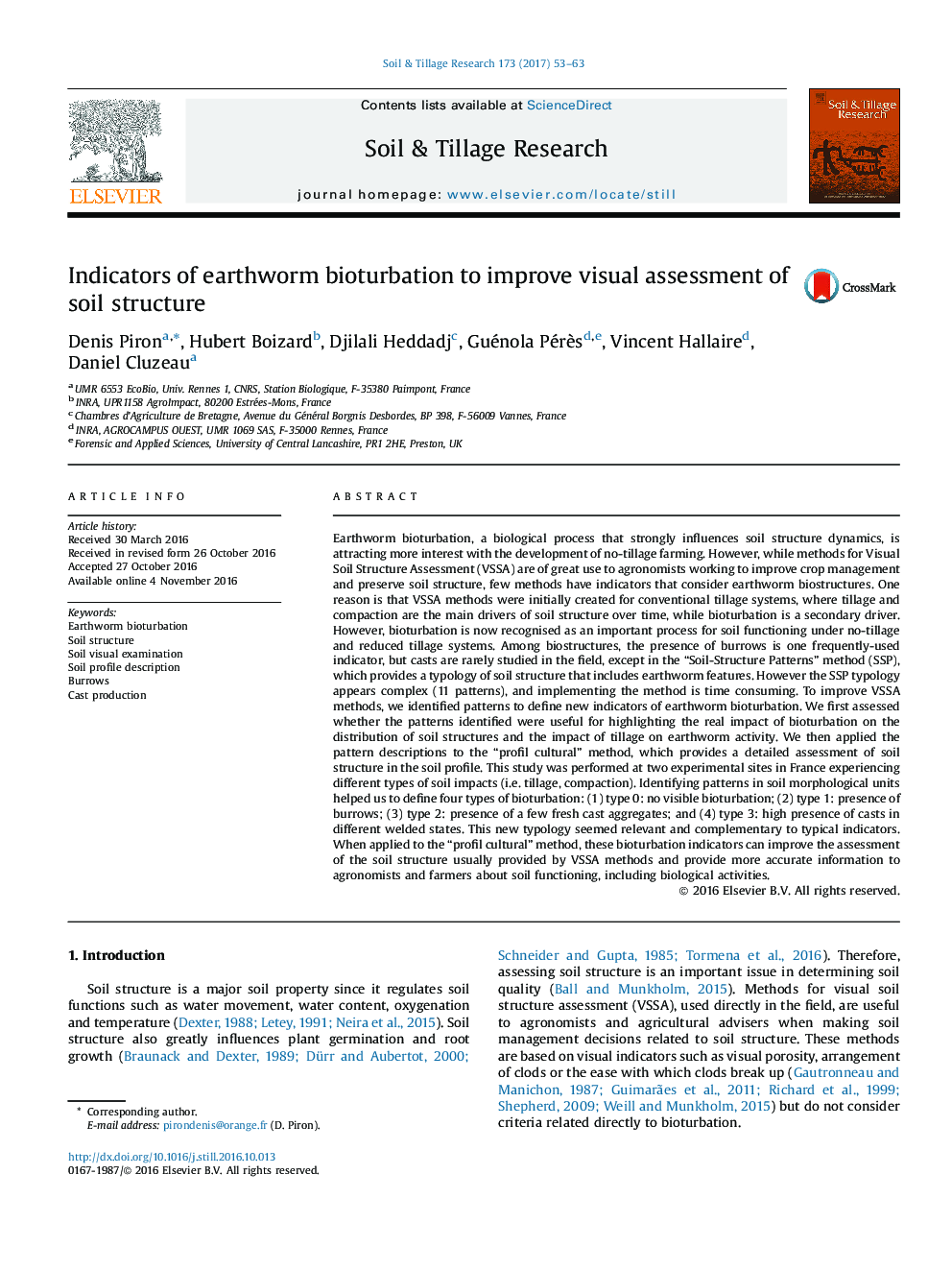| کد مقاله | کد نشریه | سال انتشار | مقاله انگلیسی | نسخه تمام متن |
|---|---|---|---|---|
| 4927486 | 1431830 | 2017 | 11 صفحه PDF | دانلود رایگان |
- Earthworm bioturbation is a major process of soil structure under reduced tillage.
- The soil-structure patterns description was adapted to the “profil cultural” method.
- Four types are proposed to describe homogeneous morphological units.
- Burrows, cast production and the freshness of cast aggregates are considered.
- The new typology can improve visual methods of soil structure assessment.
Earthworm bioturbation, a biological process that strongly influences soil structure dynamics, is attracting more interest with the development of no-tillage farming. However, while methods for Visual Soil Structure Assessment (VSSA) are of great use to agronomists working to improve crop management and preserve soil structure, few methods have indicators that consider earthworm biostructures. One reason is that VSSA methods were initially created for conventional tillage systems, where tillage and compaction are the main drivers of soil structure over time, while bioturbation is a secondary driver. However, bioturbation is now recognised as an important process for soil functioning under no-tillage and reduced tillage systems. Among biostructures, the presence of burrows is one frequently-used indicator, but casts are rarely studied in the field, except in the “Soil-Structure Patterns” method (SSP), which provides a typology of soil structure that includes earthworm features. However the SSP typology appears complex (11 patterns), and implementing the method is time consuming. To improve VSSA methods, we identified patterns to define new indicators of earthworm bioturbation. We first assessed whether the patterns identified were useful for highlighting the real impact of bioturbation on the distribution of soil structures and the impact of tillage on earthworm activity. We then applied the pattern descriptions to the “profil cultural” method, which provides a detailed assessment of soil structure in the soil profile. This study was performed at two experimental sites in France experiencing different types of soil impacts (i.e. tillage, compaction). Identifying patterns in soil morphological units helped us to define four types of bioturbation: (1) type 0: no visible bioturbation; (2) type 1: presence of burrows; (3) type 2: presence of a few fresh cast aggregates; and (4) type 3: high presence of casts in different welded states. This new typology seemed relevant and complementary to typical indicators. When applied to the “profil cultural” method, these bioturbation indicators can improve the assessment of the soil structure usually provided by VSSA methods and provide more accurate information to agronomists and farmers about soil functioning, including biological activities.
Journal: Soil and Tillage Research - Volume 173, November 2017, Pages 53-63
